When I say evergreens, what comes to mind? Admit it, you thought of a pine tree, didn’t you? “Actually Shelly, I was thinking of a cedar tree. You don’t know me!” Okay, you got me there, guy. But, when most people hear evergreen, they think of some sort of conifer tree – a tree that produces cones – such as pines, cedars, spruce, firs, cypress, etc.
Not only are conifers not the only kind of evergreen tree, but there are a wide variety of other types of plants that are evergreen as well. There are evergreen shrubs (boxwoods, yews, nandina), evergreen grasses, evergreen ferns, and evergreen flowering perennials. Fun fact that I learned from Master Gardener classes: deciduous plants lose all their leaves at once, usually when cold weather hits. Evergreen plants lose their leaves gradually over time throughout the whole year. I may sound stupid, but I thought that evergreen leaves literally stayed green forever.
Okay, that’s great Shelly, but why do I need evergreens when flowers are so much prettier? Well, take a look at this flower bed in my backyard during the winter months.

Deciduous shrub looking sad in winter 
My perennial bed has seen better days
It’s completely bare. Everything is dormant right now. My beautiful hibiscus is now a bunch of twigs, and all the vibrant perennial flowers are currently brown. Now, check out these deciduous foundation plants currently in the winter/early spring.
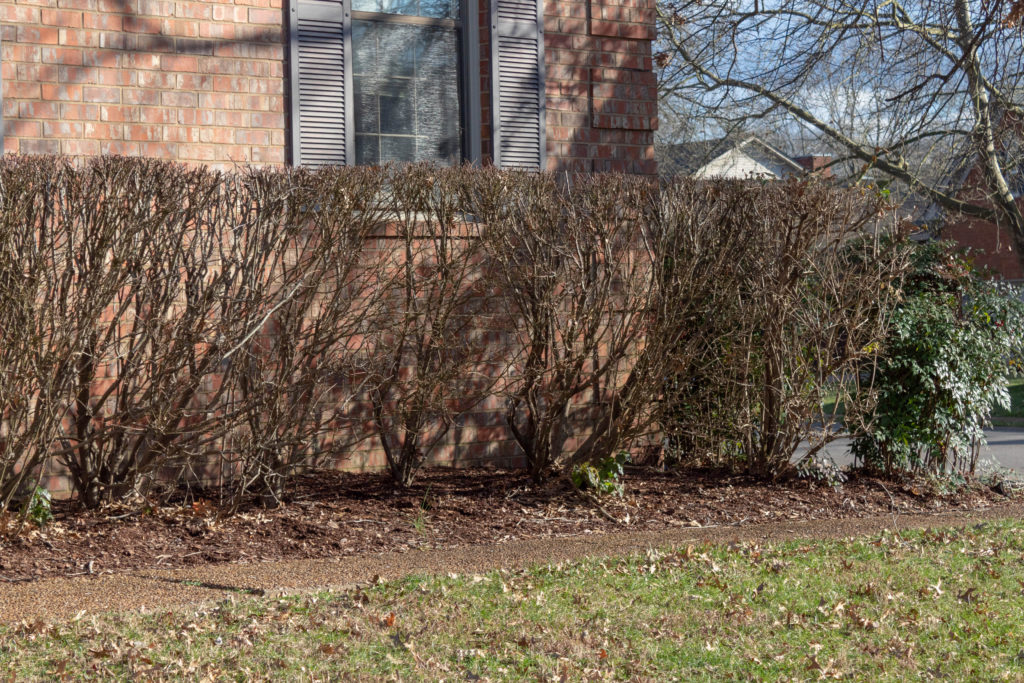
I’m not sure if those shrubs ever look good (some uggo variety of privet), but you get the picture. It looks marginally better than this when it has leaves. While deciduous shrubs can be beautiful in the spring/summer, in the winter, they aren’t as attractive. Take these hydrangeas, seen below, for example:
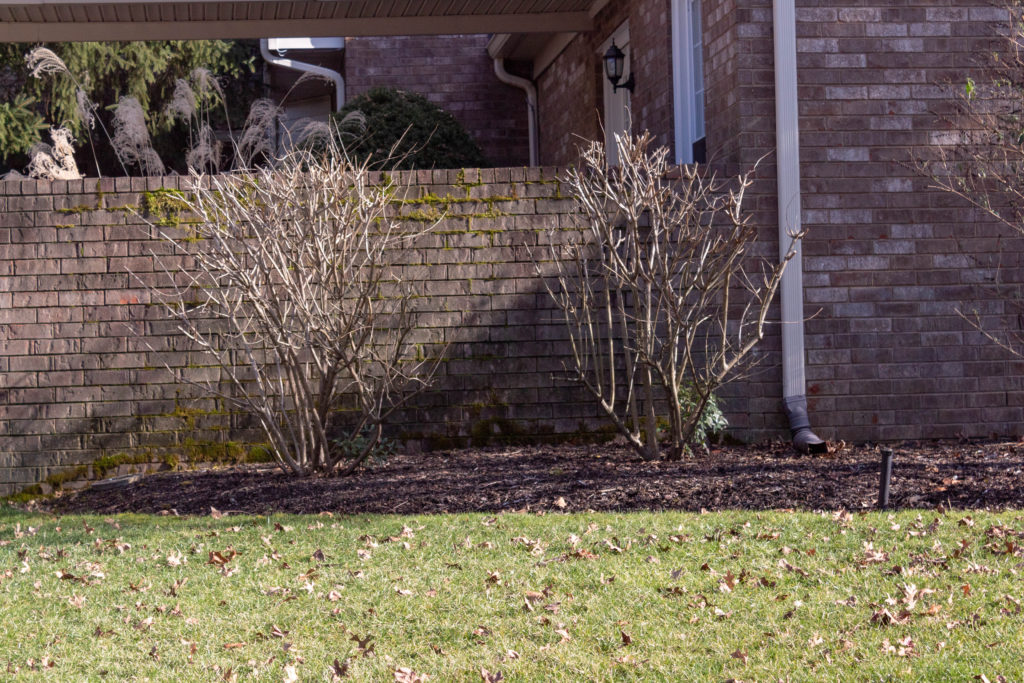
In the summer, this panicle hydrangea is full of beautiful white blooms. In the winter, however, it looks kinda sad. Now don’t get me wrong. I’m not saying don’t have hydrangeas! Just don’t only have deciduous trees, shrubs, and perennials. If you don’t choose evergreens for your garden, it won’t look good in winter. Taken in January, the pictures below show how important evergreens are in the landscape. If it’s beautiful in winter, it’ll be beautiful throughout the rest of the year. This is the same house as the previous picture. I honestly wouldn’t be able to tell that this was taken in winter if I didn’t take the picture myself😂

A great foundation of evergreens… 
…makes this garden look alive in summer and winter alike
To really drive home the point – we’re going to play Would You Rather – Garden Edition. You tell me. Would you rather have garden A:
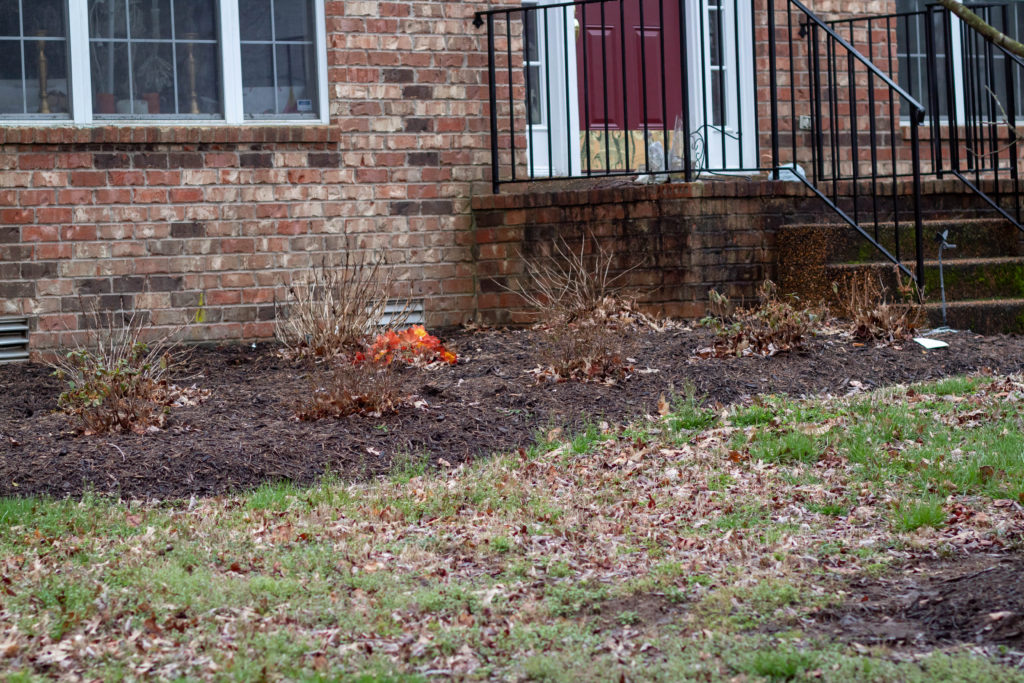
Or garden B:

Option B, right? Okay, okay. The difference is pretty dramatic between a garden that only has deciduous shrubs versus a garden that mostly has evergreen shrubs. So, let’s try again. This time, both gardens will have well-maintained landscaping, and both will have some evergreen shrubs. Here is garden A:

And, garden B:

It’s B again, isn’t it? Garden A does have nice grass, pine straw mulch, and some evergreens, but garden B has a lot more evergreens. So, when the flowers come in, like those daffodils you see in the front, it looks a lot prettier against a backdrop of other green plants rather than a stark brown landscape. Garden B just looks FULL of life, even in winter.
There’s a reason the book The Four-Season Landscape, a book about designing your garden for year-round color, starts with winter as its first season to tackle. As the author Susan A. Roth says, “If you design a garden with a good winter bone structure, it will look lovely in all seasons.”
Okay, Shelly. You’ve convinced me. So what do I get? I will lay out a list of evergreens below by category. Understand that these lists are by no means exhaustive. Also, I’m not going to list every variety/cultivar for each species. But, if you want to go beyond the plants listed here, know that some sites will tell you whether the plant is evergreen or not, and you can even search/filter by that feature. For example, here are the characteristics listed for Iberis Purity (Candytuft) on Bluestone Perennials‘ site:

Flowers + evergreen foliage = Perfection. Without further ado, here are the plant lists.

Table of Contents
Trees
- Pine….I had to…
- Other conifers – Fir, Spruce, Juniper, Cedar, Cypress, Larch, Redwood, Hemlock
- Southern Magnolia (Magnolia grandiflora)
- Live oak (Quercus)

Camellias can get tall! 
Professor Sargent Camellia 
Their flowers come in a variety of colors 
Beautiful variegated Camellia flower 
April Kiss Camellia
If you don’t have any camellias yet….what exactly are you waiting for? They make several varieties that are hardy to zone 6!
Shrubs
Evergreen shrubs don’t have to be boring! Many have interesting foliage like golden euonymus, loropetalum, and nandinas. Others flower in addition to having evergreen foliage – bonus! Camellias, azaleas, rhododendrons, pieris, and loropetalum all flower. As you can see above, I’m partial to camellias.
- Arborvitae
- Spotted laurel (Aucuba japonica)
- Azalea (make sure you check that it’s evergreen and not deciduous)
- Boxwood (Buxus)
- Camellia (Camellia japonica, sasanqua, or sinensis)
- Cotoneaster
- Golden euonymus
- Holly (Ilex)
- Juniper (Juniperus)
- Loropetalum (Loropetalum chinense)
- Mahonia (Mahonia fortunei or eurybracteata) NOT bealei or nervosa
- Mountain Laurel (Kalmia latifolia)
- Nandina (avoid the kind that produces berries as it can be toxic to native wildlife)
- Japanese Pieris (Pieris japonica)
- Rhododendron
- Winter Heath (Erica carnea)
- Yew (Taxus)

Encore azaleas have beautiful flowers in spring and fall 
Nandina has beautiful foliage 
Red berries are a plus with some evergreen shrubs
Perennials
These perennials maintain evergreen foliage, but produce flowers in the spring or summer.
- Lenten Rose (Helleborus)
- Pinks (Dianthus)
- Candytuft (Iberis sempervirens)
- Lamb’s ear (Stachys byzantina)
- Coral Bells (Heuchera)
- Rockcress (Arabis caucasica)

Ferns
- Autumn Fern (Dryopteris erythrosora)
- Christmas Fern (Polystichum acrostichoide)
- Holly fern (Cyrtomium falcatum)
- Alpine water fern (Blechnum penna-marina)
- Sword fern (Polystichum munitum)
- Resurrection fern (Pleopeltis polypodioides)

New growth on autumn ferns 
Autumn ferns maintain their foliage in winter
Grasses
- Japanese sedge (Carex oshimensis)
- Blue Fescue (Festuca glauca or cinerea)
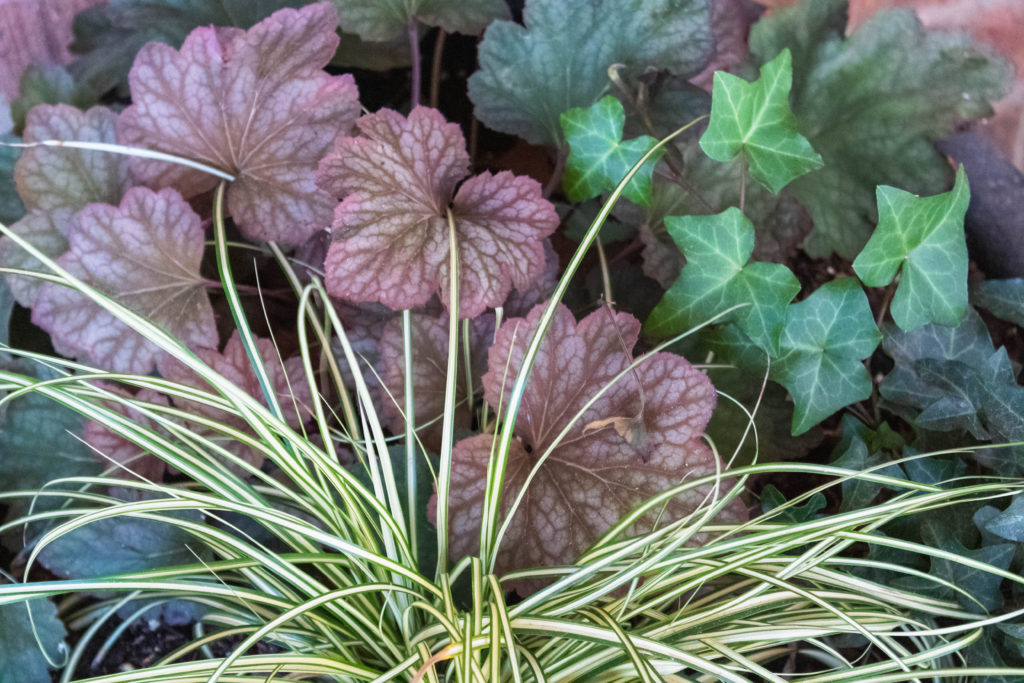
Groundcovers
- Creeping phlox (Phlox subulata)
- Japanese Pachysandra (Pachysandra terminalis)
- Creeping time (Thymus serpyllum)
- Lilyturf (Liriope muscari)
- Wintercreeper (Euonymus fortunei)
As with all groundcovers (and other plants mentioned), there are lovers and haters of each one. Some people will swear up and down that you shouldn’t plant ______. It’s invasive, it’s the biggest mistake I’ve ever made, etc. etc. As always, do your research. Make sure it’s not on the invasive plant list for your state. Look into Invasive Plant Council lists. Also, pay attention to the scientific name, particularly the variety! I’ve tried not to include invasives, but I am not perfect! And, to say that you shouldn’t plant something because it is invasive somewhere in the world is a tad dismissive. But’s that’s a post for another day. Working title: “Invasive vs. Just Annoying for Me Personally.” Just because something spreads, doesn’t mean it’s invasive. I mean, that’s kind of the point of ground covers. Okay, I’ll stop now!

The daffodils look even more beautiful coming up out of the green pachysandra 
Tired of trying to get grass to grow on the berm? Try creeping phlox instead
Vines
- Evergreen clematis (Clematis armandii or Clematis cartmanii)
- Carolina jessamine (Gelsemium sempervirens)
- Winter Jasmine (Jasminum nudiflorum)
So there you have it! A virtual smorgasbord of evergreens! I hope I have convinced you of the importance of evergreens. I know I plan to include more in my garden this year. How about you?
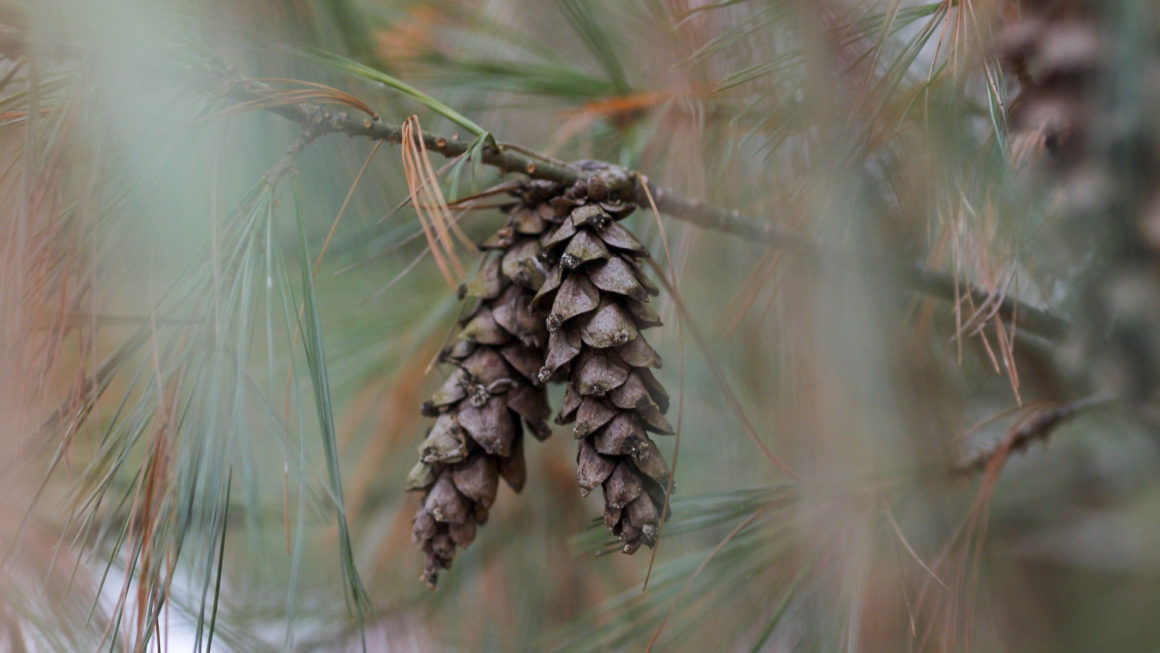

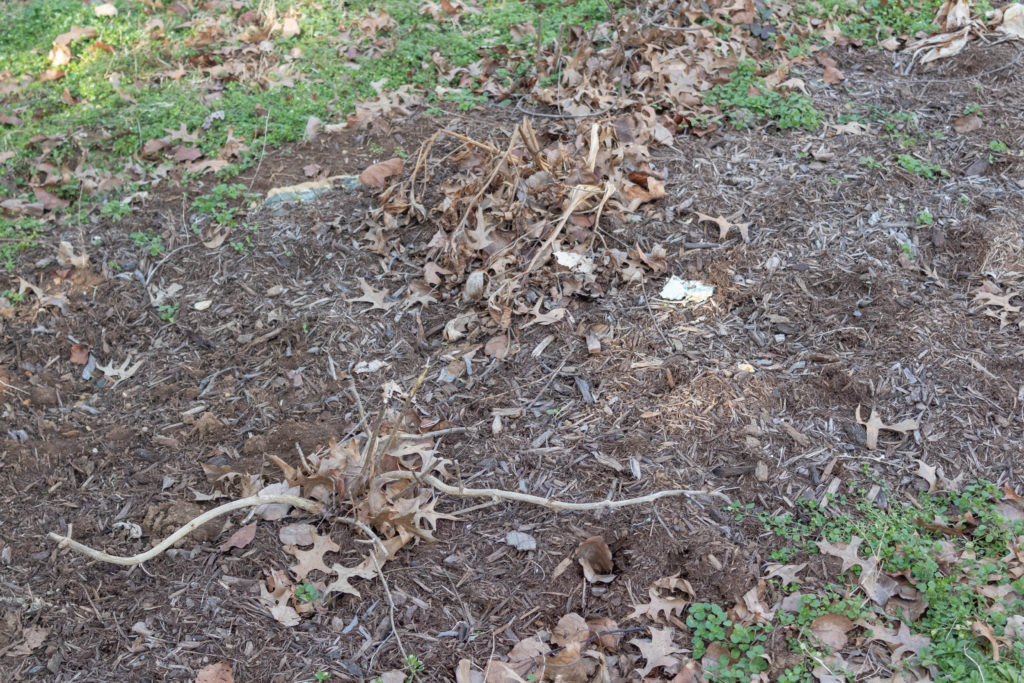


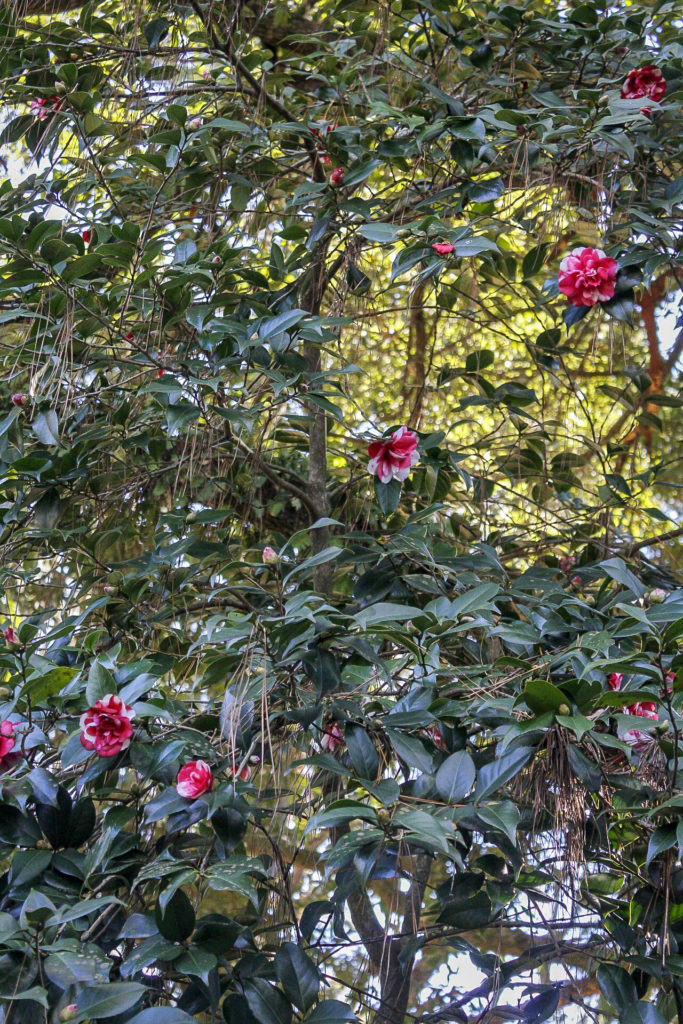
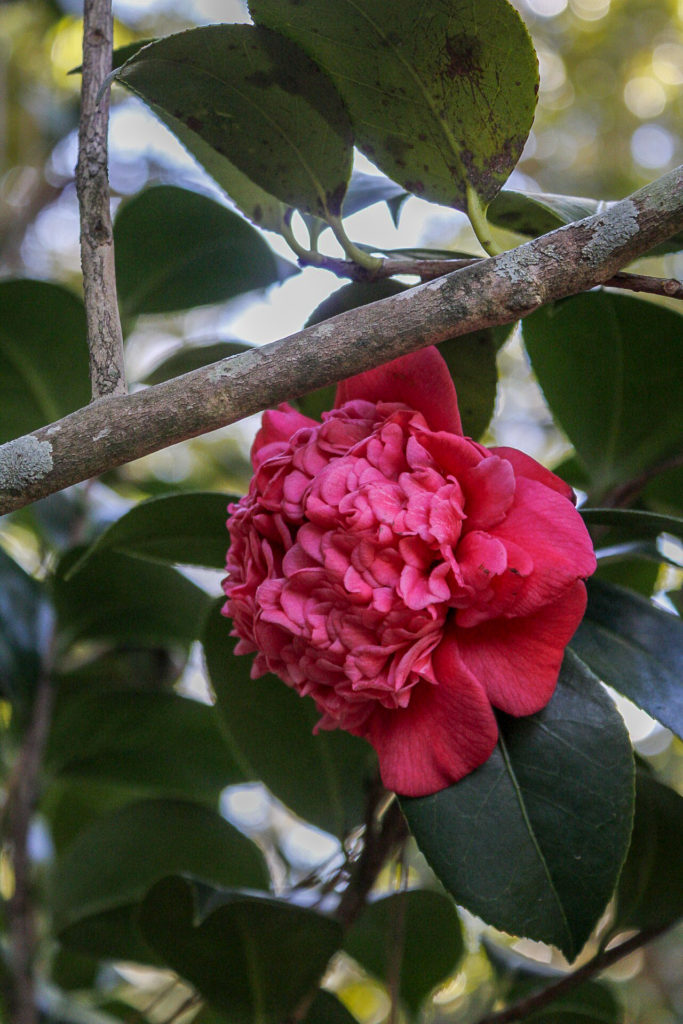
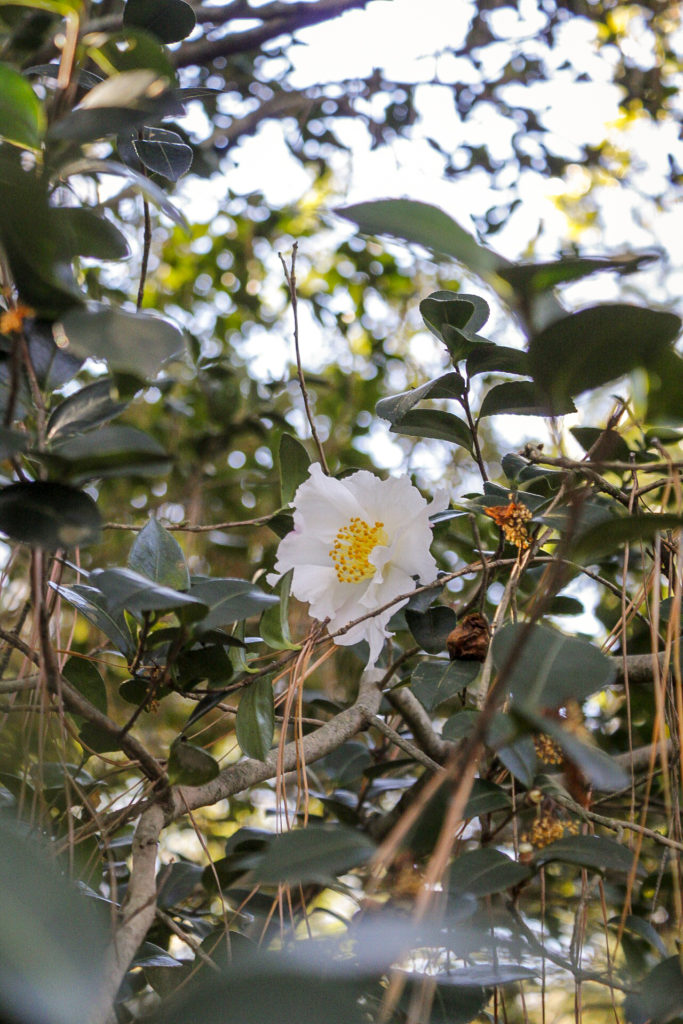
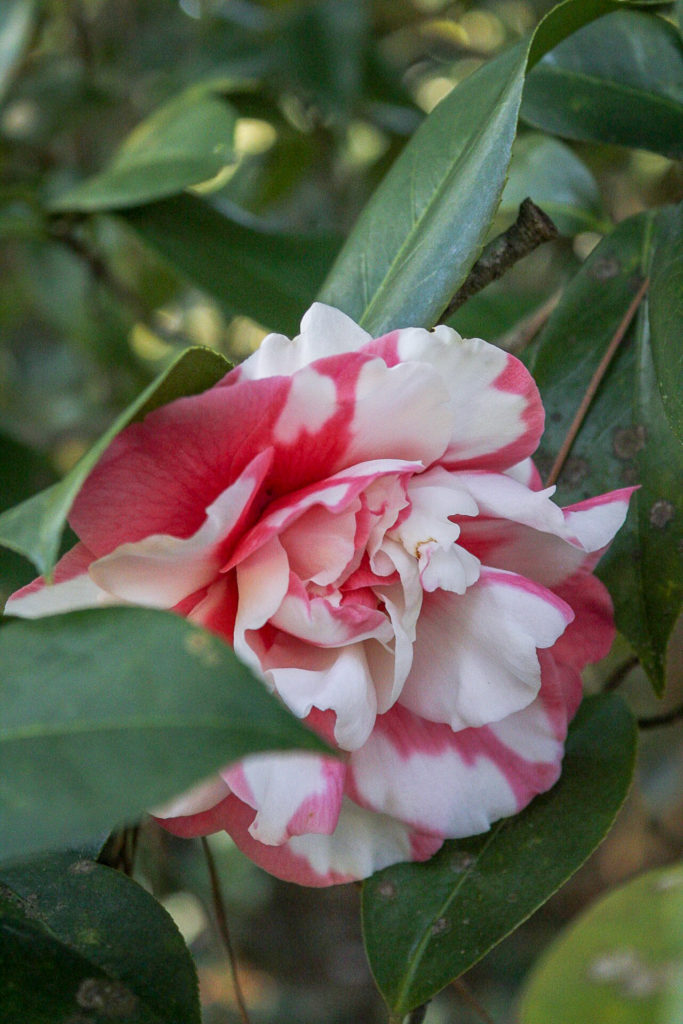
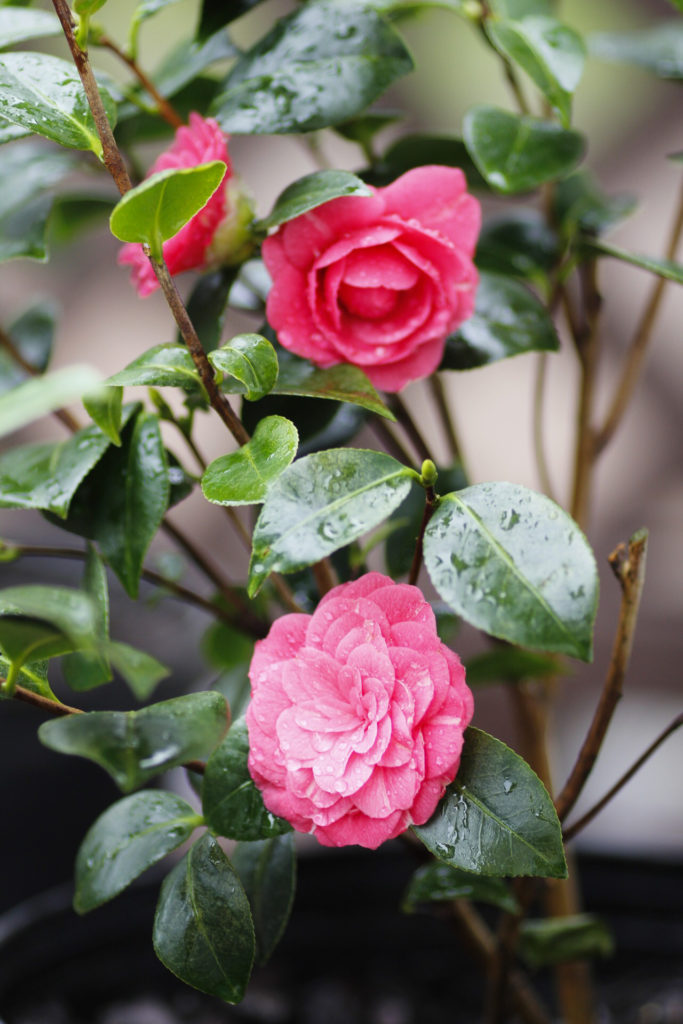
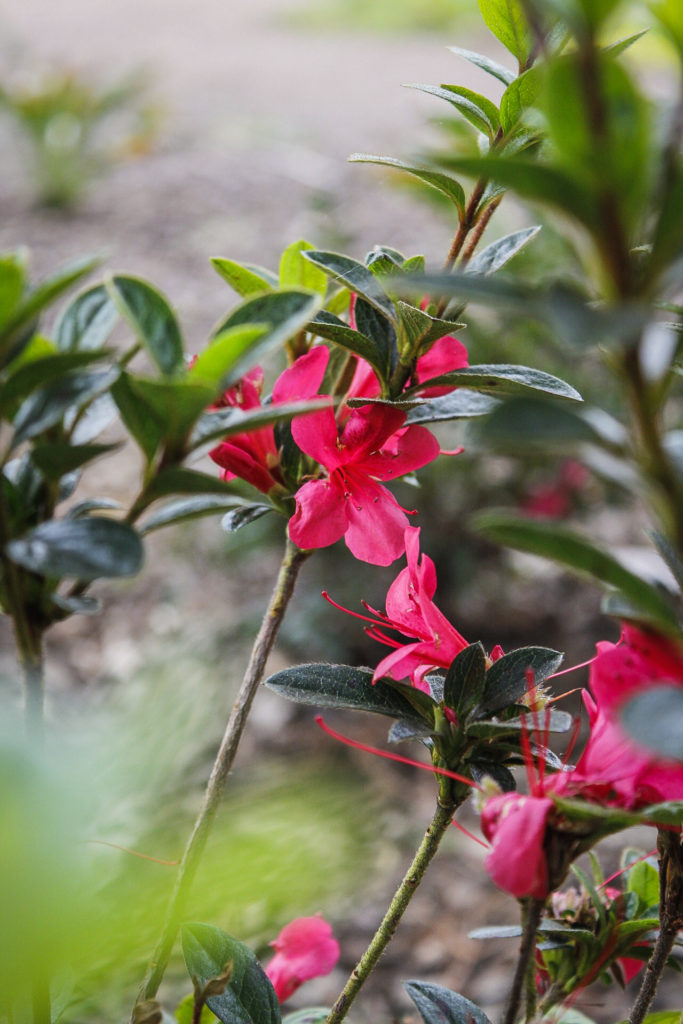
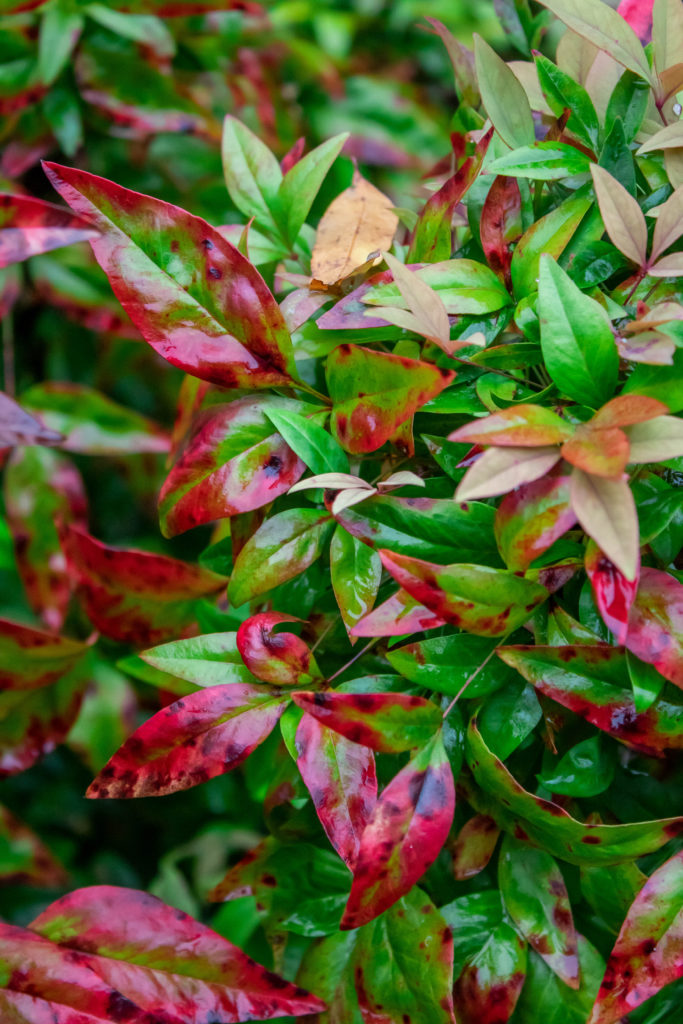
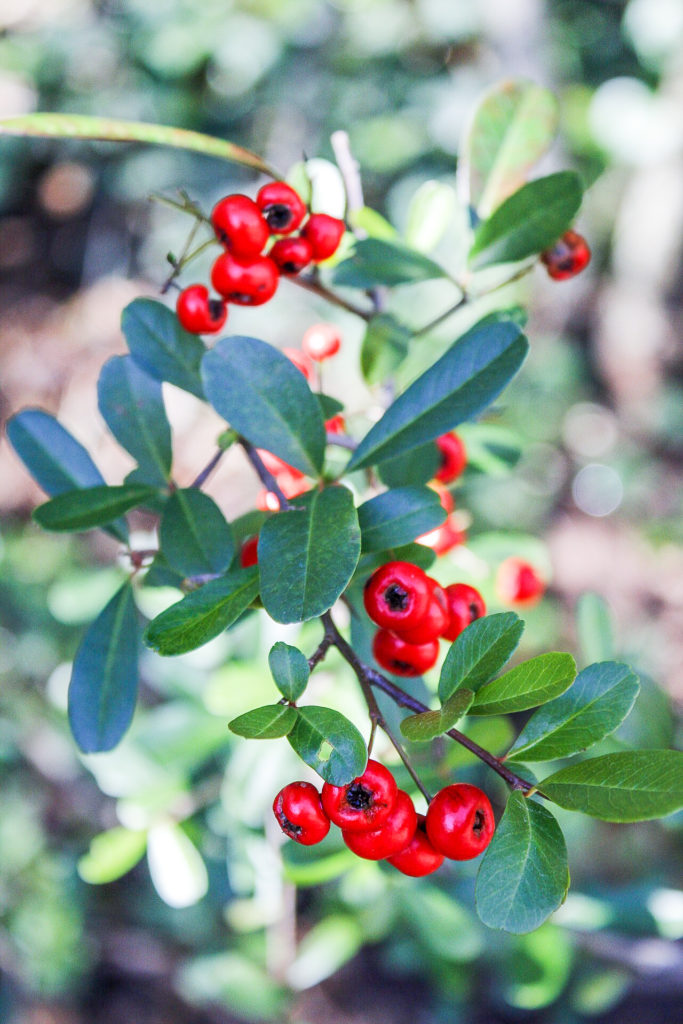
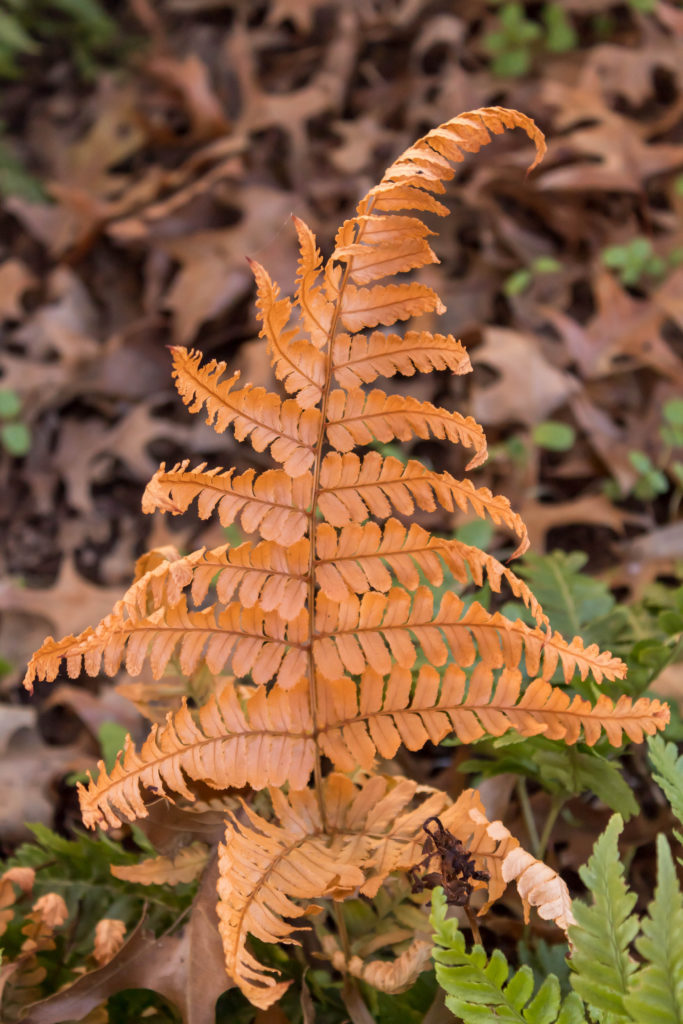

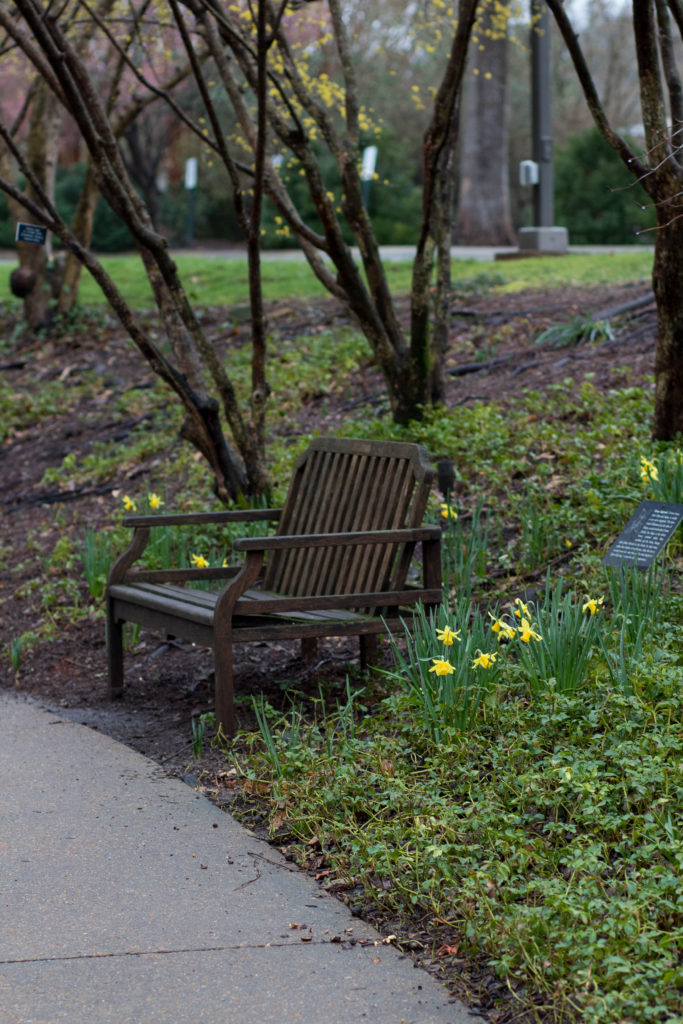
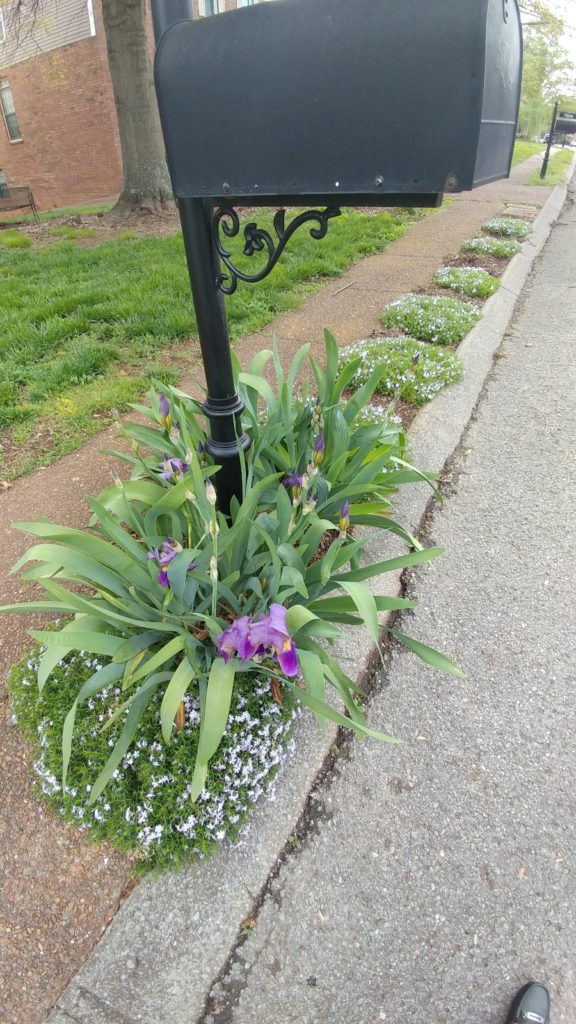
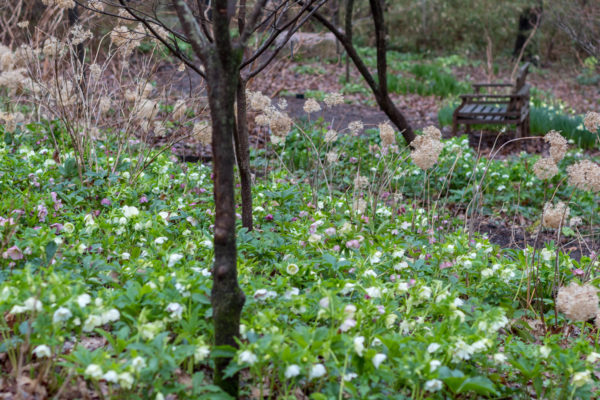
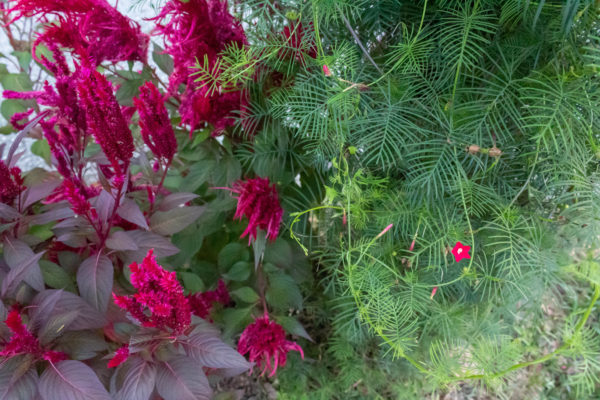

SO beautiful! I especially love the way you decorated your mailbox!
I am going to do a post on mailbox gardens soon!